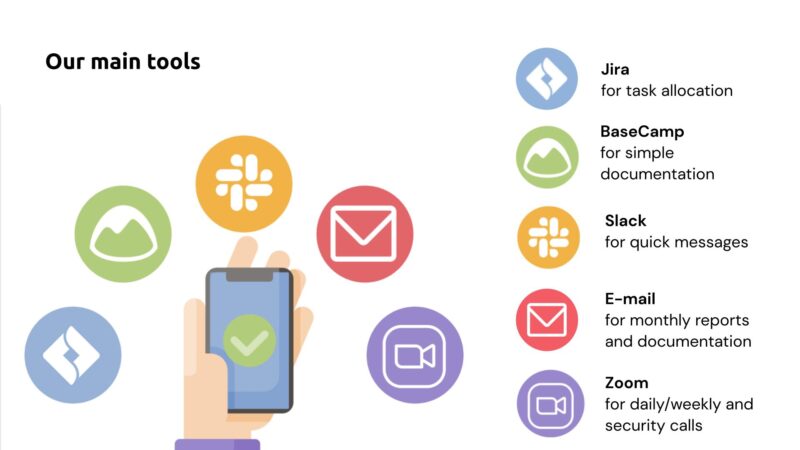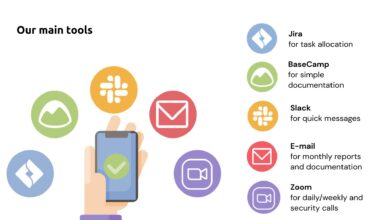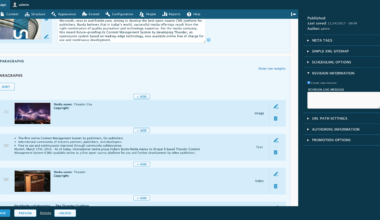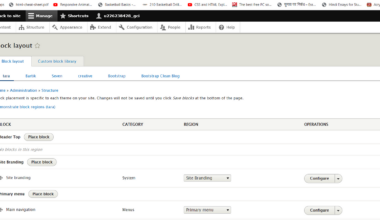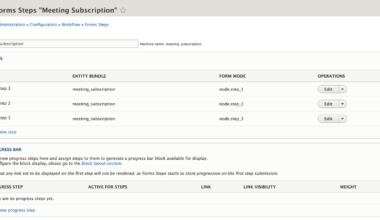Introduction to Drupal for Education
As technology continues to advance, the world of education has been greatly impacted. One of the most significant changes in the education sector is the use of Content Management Systems (CMS). CMS is a tool that allows users to create, manage, and distribute digital content. Drupal is one of the most popular CMS platforms, and it provides a wide range of features that makes it an excellent choice for educational institutions.
Drupal is an open-source CMS, which means it is free to use, and its source code can be accessed and modified by anyone. This platform has been used by many educational institutions to create websites, manage content, and facilitate communication between teachers, students, and parents. Drupal features a modular architecture that allows users to add or remove features based on their needs.
With Drupal, educational institutions can create robust, user-friendly websites that can be used to manage all aspects of school life. From managing student records to sharing important school news and events, Drupal provides a flexible and scalable solution that can be customized to meet the unique needs of each institution.
In this article, we will explore the benefits of using Drupal in education, best practices for implementing Drupal, and real-world examples of how educational institutions are using Drupal to enhance their online presence. Whether you are a teacher, student, or administrator, this article will provide you with valuable insights into the world of Drupal and how it can be used in education.
Benefits of using Drupal in Education
Drupal is a powerful CMS that provides numerous benefits for educational institutions. Below are some of the benefits of using Drupal in education:
1. Customizable
Drupal provides a modular architecture that allows users to customize their websites based on their needs. This flexibility is crucial in the education sector, where different institutions have different needs. With Drupal, educational institutions can add or remove features to create a website that meets their unique requirements.
2. Scalable
Drupal is highly scalable and can handle large amounts of data. This scalability is essential in the education sector, where schools and universities have to manage large amounts of student data, including grades, attendance, and transcripts.
3. User-friendly
Drupal is user-friendly and easy to use, even for non-technical users. This feature is crucial in the education sector, where teachers and administrators may not have a strong technical background.
4. Mobile-friendly
Drupal is mobile-friendly, which means that websites created using Drupal can be accessed from any device, including smartphones and tablets. This feature is essential in the education sector, where students and parents may need to access school information from their mobile devices.
5. Secure
Drupal is a highly secure CMS, with regular security updates and patches. This security is crucial in the education sector, where schools and universities need to protect sensitive student data.
6. Integrations
Drupal can integrate with a wide range of third-party applications, including Learning Management Systems (LMS), Student Information Systems (SIS), and other educational tools. This integration is vital in the education sector, where schools and universities use multiple tools to manage their operations.
In conclusion, Drupal is an excellent choice for educational institutions looking for a robust, flexible, and scalable CMS. With its customizable and user-friendly features, Drupal can help schools and universities create websites that meet their unique needs. Its security, scalability, and mobile-friendly features make it an ideal choice for managing student data and facilitating communication between teachers, students, and parents.
Best Practices in Drupal for Education
Implementing Drupal in education requires careful planning and execution. Here are some best practices that educational institutions should follow when using Drupal:
1. Develop a Strategy
Before implementing Drupal, educational institutions should develop a strategy that outlines their goals and objectives. The strategy should identify the key stakeholders, define the scope of the project, and outline the timeline for implementation. The strategy should also identify the features and functionality that the website should have.
2. Choose the Right Modules
Drupal features a modular architecture that allows users to add or remove features based on their needs. When using Drupal in education, institutions should choose modules that are specifically designed for education. For example, the Organic Groups module can be used to create private groups for teachers, students, and parents to facilitate communication.
3. Use Responsive Design
With the increasing use of mobile devices, it is essential to ensure that websites created using Drupal are mobile-friendly. Educational institutions should use responsive design to ensure that their websites can be accessed from any device. A responsive design ensures that the website adjusts to the screen size of the device.
4. Ensure Accessibility
Educational institutions should ensure that their websites are accessible to everyone, including individuals with disabilities. Drupal provides accessibility features that comply with WCAG 2.0 guidelines. Institutions should test their websites for accessibility and make necessary adjustments.
5. Train Users
Drupal is user-friendly, but it still requires some training to use effectively. Educational institutions should provide training to teachers, administrators, and other users to ensure that they can use Drupal effectively. Institutions can provide training through online tutorials, videos, or in-person training sessions.
6. Regular Maintenance
Drupal requires regular maintenance to keep the website running smoothly and to ensure security. Educational institutions should perform regular updates and security patches to ensure that their website is secure. Institutions should also monitor the website for any issues and make necessary adjustments.
In conclusion, implementing Drupal in education requires careful planning and execution. Educational institutions should develop a strategy, choose the right modules, use responsive design, ensure accessibility, train users, and perform regular maintenance. Following these best practices will help educational institutions create a website that is user-friendly, secure, and meets their unique needs.
Examples of Drupal in Education
Drupal has been used by numerous educational institutions around the world to create powerful websites that manage all aspects of school life. Here are some real-world examples of Drupal in education:
1. Harvard Law School
Harvard Law School uses Drupal to manage their online presence. Their website features news, events, and information about the school’s programs. They also use Drupal to manage their online courses, including course registration, assignments, and grades.
2. University of Colorado Boulder
The University of Colorado Boulder uses Drupal to manage their websites for the College of Arts and Sciences, the Graduate School, and the School of Education. They use Drupal to manage student profiles, course information, and faculty directories.
3. University of Michigan
The University of Michigan uses Drupal for their School of Public Health website. They use Drupal to manage course information, faculty profiles, and research projects. They also use Drupal to create community websites for students, faculty, and alumni.
4. Stanford University
Stanford University uses Drupal to manage their websites for the Graduate School of Education and the School of Engineering. Their websites feature course information, faculty profiles, and research projects. They also use Drupal to manage events and news updates.
5. Georgia Tech
Georgia Tech uses Drupal to manage their websites for the College of Computing and the College of Engineering. Their websites feature course information, faculty profiles, and research projects. They also use Drupal to manage student organizations and events.
In conclusion, Drupal has been used by many educational institutions to create robust, user-friendly websites that manage all aspects of school life. From managing student records to sharing important school news and events, Drupal provides a flexible and scalable solution that can be customized to meet the unique needs of each institution. The real-world examples of Drupal in education demonstrate the versatility and power of this CMS platform.
Final Thoughts on Drupal for Education
In conclusion, Drupal is an excellent choice for educational institutions looking for a powerful CMS platform that can help them manage all aspects of school life. Drupal’s flexibility, scalability, and security make it an ideal choice for managing student data and facilitating communication between teachers, students, and parents.
When implementing Drupal in education, institutions should follow best practices, such as developing a strategy, choosing the right modules, using responsive design, ensuring accessibility, training users, and performing regular maintenance. These best practices will ensure that institutions can create a website that meets their unique needs and is user-friendly, secure, and accessible to everyone.
The real-world examples of Drupal in education demonstrate the versatility and power of this CMS platform. Institutions such as Harvard Law School, University of Colorado Boulder, University of Michigan, Stanford University, and Georgia Tech have successfully used Drupal to manage their online presence and improve their operations.
Overall, Drupal is a valuable tool for educational institutions looking to enhance their online presence and streamline their operations. With its numerous benefits, best practices, and real-world examples, Drupal is an excellent choice for any educational institution looking to improve its online presence and manage student data and communication effectively.
